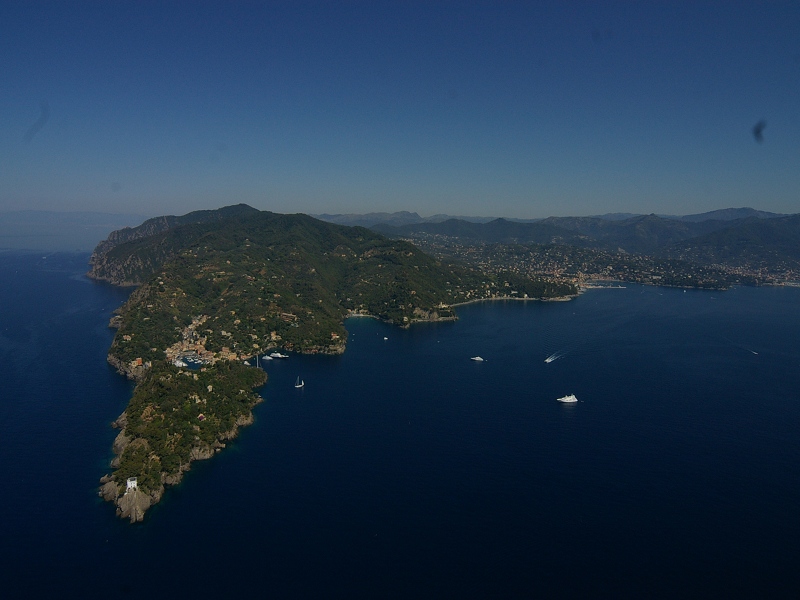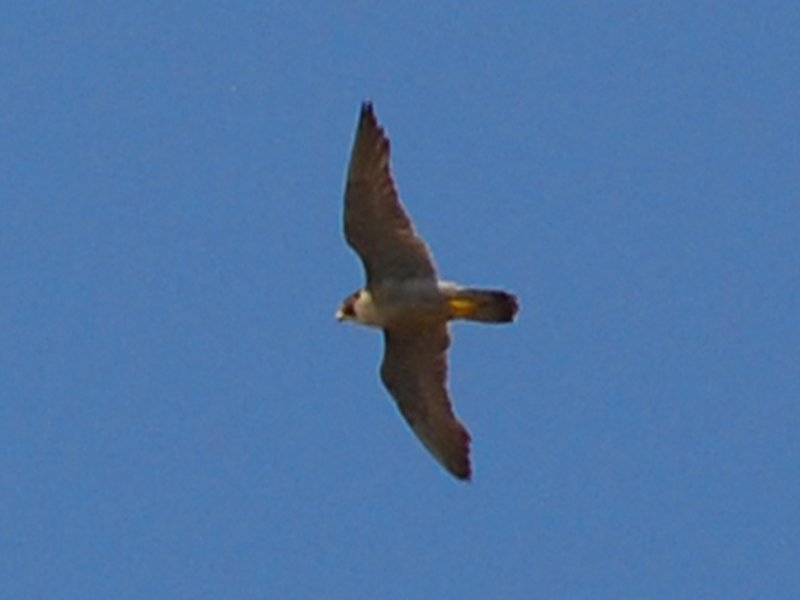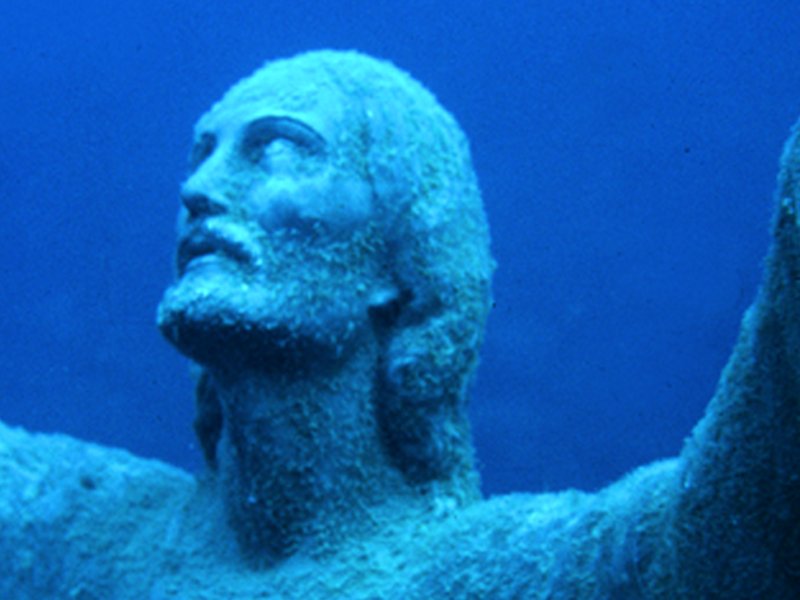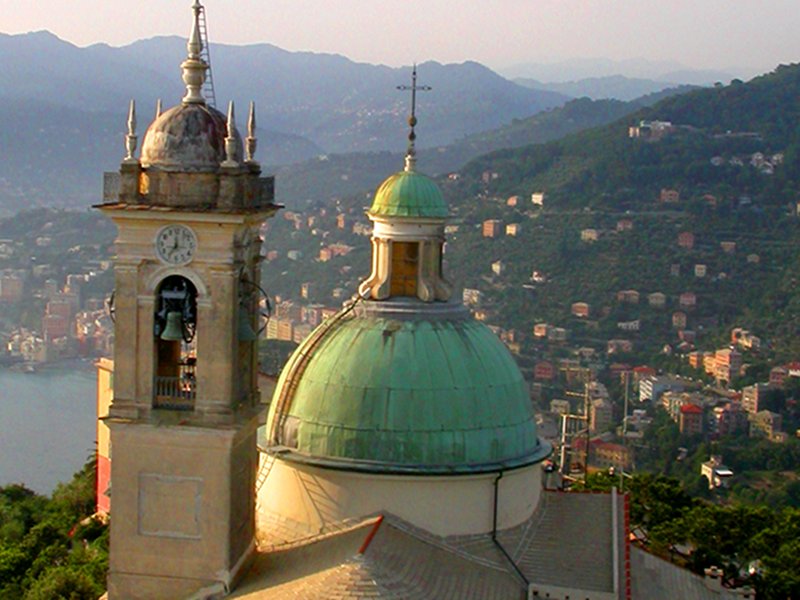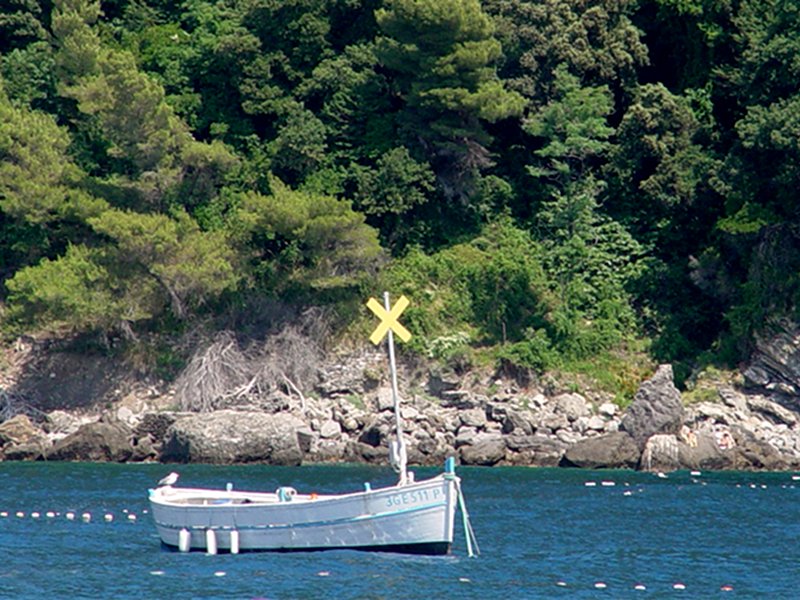Parco Naturale Regionale di Portofino
www.parcoportofino.itProtected Area
Identity Card
- Portofino Regional Nature Park:
- Land Surface Area: 1'056.26 ha
- Regions: Liguria
- Provinces: Genova
- Municipalities: Camogli, Chiavari, Portofino, Rapallo, Santa Margherita Ligure, Zoagli
- Establishment Measures: LR 12 22/02/1995
- PA Official List: EUAP0453
- Park Authority: Ente Parco di Portofino
- Further managed Protected Areas:
- ZSC Parco di Portofino
- ZSC Pineta - Lecceta di Chiavari
- ZSC Rio Tuia - Montallegro
 The Statute of Portofino Park Authority (PDF, Italian text - 115Kb)
The Statute of Portofino Park Authority (PDF, Italian text - 115Kb)
The Park
Portofino Park offers a global view of the Ligurian coast
both from a naturalistic and a historical-anthropological point of
view. The present aspect of the territory is the result of an original
coevolution between nature and human activity which has led to the
creation of a surprising variety of biological systems and habitats but
also to a specific "material" culture (the confluence of sea, olive,
and chestnut civilization). A very thick network of paths crosses wild
habitats, rural settlements, and sea villages rich in art and history
and offers landscapes which have become part of the Mediterranean
visual legend.
The Protected Area (1,200 ha) is surrounded by a
frame-area of about 3,400 hectares. The Park territory reaches the
Municipalities of Recco, Camogli, Portofino, Santa Margherita Ligure,
Rapallo, Zoagli, and Chiavari.
The Habitats
The northern section (on marly limestone and alternating strata of clay and sandstone) is dominated by mesophytic woods of hop hornbeam, ash trees, chestnut trees, hazelnuts, and common maples, while the southern slope (based on pudding-stone, which is a conglomerate of round detritus cemented by a calcareous structure) is covered by a thick Mediterranean maquis (heather, strawberry tree, lentisk, and myrtle), by pine woods, holm oak forests, ampelopsis grasslands and bracken fern. Moreover, peculiar biological systems can be found on cliffs near the sea, on crags and dry-stone walls, in the fresh little valleys which originated by the Promontory complex orography. The agricultural land is covered by olive trees cultivated on strips often with vegetable gardens at their foot, presenting characteristic "mixed" cultivations. Near the settlements, among forest and maquis strips, there are old chestnut woods, rows of pines, very small vegetable gardens, orchards, citrus groves, and gardens.
Flora
The exceptional variety of habitats and microclimate forms one of the largest flower concentrations in the Mediterranean area: more than 700 spontaneous species live in a limited area with small altitude variations (0-610 m). The rare Saxifraga cochlearis which is a species of the Alpi Marittime, lives together with mesophytic species of the mixed woods, of the maquis and even with thermopile elements, like the African ampelopsis or the spiny spurge. Olive trees, pines, holm oaks, and chestnut trees, usually covering high levels, live almost until sea-level. Ferns are particularly interesting (rock and wall ferns, royal ferns, and the Cretan brakes).
Fauna
More than 20 Ligurian endemic species can be found among the invertebrates. The Two-tailed Pasha (Caraxes jasius) should be mentioned, since it is becoming very rare in Liguria. Among the amphibians there are: the Mediterranean Treefrog, the Cave Salamander, and the Italian Frog. Among the reptiles: the Turkish Gecko, the Moorish Gecko, and the Green Lizard. The avifauna (about one hundred species) includes maquis birds (Sardinian Warbler, Dartford Warbler, Blackcap, and Whitethroat), clearing birds (Hoopoe, Ortolan Bunting, and Goldfinch), pinewood birds (Thrush, Blue tit, Chaffinch, Robin, and Jay), pine-wood birds (Turtle dove and Woodpigeon), birds of prey (Kestrel, Buzzard, Peregrine, and Hobby) and sea birds (Seagulls, Common terns, Shearwaters, and Gannets). The mammals are represented by foxes, badgers, squirrels, hedgehogs, stone martens, wild boars, and several micromammals.
The Seabed
The rocky spur of the Promontory stretching towards the open sea and characterized by overhanging coasts, gives origin to the most interesting and intact seabed of the Mediterranean basin. In this stretch of seabed, the whole spectrum of biocenosis of the Upper Tyrrhenian Sea is represented. It is particularly relevant the presence of several species of the southern Mediterranean Sea, the exceptional vegetal and animal richness of the coast, the variety of Porifera and Posidonia beds, the formations of yellow gorgonian (Eunicella stricta), orange gorgonian (Eunicella cavolinii), red gorgonian (Paramuricea chamaelon), and the coral populations (Corallium rubrum). A Riserva marina (Marine Reserve) has been recently established to protect the wonderful seabed.
History and Art
The human presence on the Promontory has been documented since the
Bronze Age (14th century BC), but it is only from the end of the Iron
Age (2nd century BC) that the Mediterranean Ligurian settlement
established around the "castellaro" in Camogli. The slow and opposed
Roman penetration moved the political barycenter on the eastern slope,
where the inlet of Portofino (Portus Delphini) offers one of the best natural protected landings of the Mediterranean basin.
Around the 10th century the feudal control of the Benedictine
monks of San Fruttuoso Abbey (southern slope) became more and more
important. They represent one of the most influential ecclesiastical
institutions of the Mediterranean Sea.
The San Fruttuoso Abbey is one of the most considerable monumental
complexes of the Ligurian coast. Among the other monuments of the
Promontory there are the 14th century Cervara Abbey and the Romanesque
church of S. Nicolò di Capodimonte (12th century). Thanks to a very
intense religious tradition, the territory is scattered with several
churches, convents, little chapels, and rural as well as sea niches.
Such tradition has given rise to the original form of expression of the
sea votive offerings (Nostra Signora del Boschetto, in Camogli).
The cultural and economic influence of the seafaring activities and in
particular the one of the navy in Camogli, is documented in the Museo Marinaro (Sea Museum) "Gio Bono Ferrari" in Camogli.
Traditional Cultures
The handicrafts and the farming traditional activities (dry-stone walls, the mill systems for the processing of wheat, chestnuts, and olives, the mixture of chestnut trees and ampelopsis, the lace, the harvesting of aromatic and medicinal plants, and the wood craftsmanship) are typical of the area as well as the activities linked to seafaring traditions like the "gozzi" in Paraggi and the "tonnara" in Punta Chiappa. According to the Ligurian tradition, the gastronomy is based on a few and simple ingredients such as olives, anchovies, "gallette", flat loaves, vegetable soups, stuffings, oil, and aroma.


